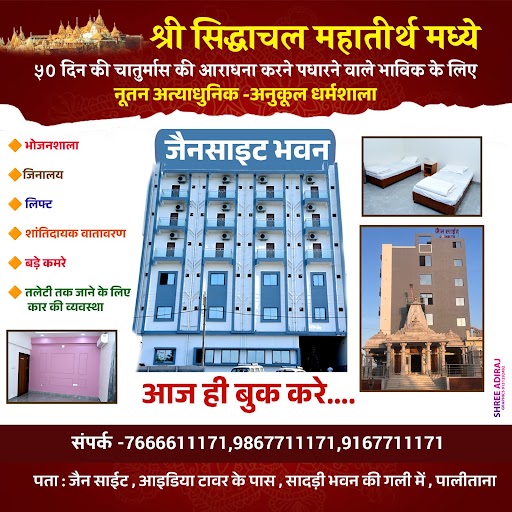Chapter 28 – Six Essentials (Ävashyaka)
Jainism is a very practical religion, which helps us in every day affairs of life. Jainism has to be practiced and lived. Jain ethics is meant for all men and women in every walk of life. Contemplation of the soul is the main part of Jainism. Contemplation of the soul includes thinking, analyzing and meditating as a part of the right conduct.
The rituals are interwoven in the daily life of a pious Jain. Going to the temple, listening to the Guru, practicing vows, giving alms to Sädhus, performing Sämäyika for equanimity, performing Pratikraman for introspection, practicing non-violence, carrying out charitable acts, living an honest life and many similar acts constitute the daily rituals of a Jain.
The soul, in its pure form, has infinite perception, infinite knowledge, infinite vigor, and infinite bliss. These attributes are not realized by a worldly soul because it is smeared with karmas. The karmas are mainly due to four passions (Kashäya); anger, ego, deceit and greed. Tirthankars have expounded on many ways to free us from these four Kashäya to attain Moksha. One of the ways is a daily practice of six Ävashyaka (essentials). Practicing six essential rites with true faith helps us progress spiritually. These six essential rites are to be practiced daily.
Six Essential Observances :
Both Digambar and Shvetämbar traditions have six essentials but there exist some differences.
Six Essential Observances of Shvetämbar-Tradition
Sämäyika To remain calm and undisturbed in a state of equanimity for 48 minutes.
Chauvisattho To pray and appreciate the qualities of the twenty-four Tirthankars.
Vandanä Devotion and service to Guru Maharaj.
Pratikraman To repent, reproach, and reflect upon past wrong thoughts and deeds.
Käyotsarga Non-attachments to the body (standing or sitting motionless and meditating for a set period of time).
Pratyäkhyän or Taking religious vows renouncing certain activities and certain
Pachchakhän foods for a set period of time to discipline one’s self
Six Essential Observances of Digambar-Tradition
Devapujä To pray and appreciate the qualities of the twenty-four Tirthankars
Gurupästi Devotion and service to Guru Maharaj
Swädhyäy Studying of Scriptures
Self restraint – to carry out the householder’s vows (Anuvrata) with
Sanyam complete self discipline
Tap Penance or austerities, which include Pratikraman, Pratyäkhyän, and Käyotsarga
Dän Charity – giving alms to mendicants and needy
1. Sämäyika– Equanimity.
Sämäyika means to remain calm and undisturbed, to get detached from daily activities and to engage in spiritual activities to be free of all passions, and not to have feeling of liking, disliking, attachment, desire, or aversion. Sämäyika is the process that enhances the quality of equanimity. It helps to take one closer to the soul and to acquire a stable mind and temperament.
No one has attained Moksha and no one will attain Moksha without the practice of Sämäyika. To treat all living beings equal is the Sämäyika. To abandon wrongful activities and to practice spiritually right activities is Sämäyika. Sämäyika is the true conduct. Sämäyika is the essence of Tirthankar’s teachings. One has to practice Sämäyika to attain the right perception, the right knowledge and the right conduct. Jain monks and nuns are in the state of equanimity (Sämäyika) throughout their life. A devout Shrävak practices Sämäyika everyday. Great detail on the subject of Sämäyika is in the Jain canonical books. One should practice at least one Sämäyika a day, if not more. Time spent in Sämäyika is time spent as a Sädhu.
2. Chaturvimshati-Stava – Praying and appreciating the qualities of the twenty-four Tirthankars.
Logassa Sutra is the Chaturvimshati-Stava. By reciting Logassa Sutra with true faith, one purifies their thoughts, and attains the right perception. One who has the right perception attains Moksha in a relatively short time. By praising the qualities of Tirthankars, passions are subdued.
3. Vandanä – Respecting and saluting Guru Maharaj.
In the absence of Tirthankar, our true teachers are our Jain Ächäryas, Upädhyäys and Sädhus, who show us the path of liberation. They are the practitioners of the true path of salvation. By paying respect to Jain monks and nuns, one becomes humble, controls his ego and pride; and develops the quality of humility (Vinay). This process subdues our passions, and helps us advance spiritually.
4. Pratikraman – Reviewing our daily activities, and expressing remorse for sinful
Pratikraman is the most important Ävashyaka (essential rite). “Prati” means “back” and “Kraman” means “to go”, i.e. to go back, review, confess, and repent the bad thoughts and deeds from our activities. It also means going back to the path of nonviolence, truthfulness, non-stealing, celibacy and non-attachment, and forgiving the faults of others, asking forgiveness for our faults without any reservation, and extending friendship. This will stop (Samvar) the influx (Äsrava) of karma that covers the true nature of our soul (self, Jiv, or Ätmä), which has the qualities of perfect knowledge, vision, bliss, and power. Pratikraman is like a mirror where we see our selves internally, the way it is. We see our faults, and wrong doings. We ask for forgiveness for all wrongful acts, and take vows to minimize such acts.
5. Käyotsarga – Renouncing attachments to the body and tuning with oneself.
Since beginningless time (Anädi-Käl) we have been considering our body as ourselves, not the soul. This is the main reason for our misery. The process of Käyotsarga involves forgetting body, mind and emotions as much as possible so that one can concentrate on the soul and experience that the soul and body are two separate entities. This process helps reduce attachment to material things. This gives the experience that our self is our soul and not our body.
6. Pratyäkhyän/Pachchakhän – Renouncing certain activities for certain time, to discipline one’s self.
One takes vows according to one’s capabilities to disengage from extraneous substances and to engage in the self-substance. The Shrävaks take partial vows and ascetics take the great vows.
Importance of Pratikraman
Among all six essentials, the Pratikraman ritual is the most important one. It covers the other five essentials during the performance of its rites as follows:
One is required to do the Sämäyika before starting the Pratikraman ritual. During the Pratikraman ritual, by reciting Logassa and Namutthunam Sutras one salutes the twenty-four Tirthankars and their qualities. By reciting Panchindiya and Khamäsamano Sutras one salutes the ascetics and their qualities. Thus, the Pratikraman includes Chaturvimshati-Stava and Vandanä essentials. The Pratikraman ritual is done while sitting or standing in the meditating posture, and this is Käyotsarga. During the Pratikraman ritual one is required to take the Pachchakhän according to one’s capacity covering Pratyäkhyän essential.
The Pratikraman ritual includes many Sutras. The original sutras are written in Ardha-Mägadhi (language of the common people during Bhagawän Mahävir’s time) and Sanskrit languages, which consist of many hymns in praise of Lords and many verses of repentance and confession.
Jains are required to perform Pratikraman twice a day, in the morning and in the evening. The Devasi (evening) Pratikraman is for the sins committed during the day. Räi (morning) Pratikraman is for the sins committed during the night. However, if someone cannot perform Pratikraman daily, he can do a biweekly, quarterly, or yearly Pratikraman. The yearly Pratikraman is called Samvatsari and the scriptures indicate that all Jains must do Samvatsari Pratikraman.
Spiritual Meanings Behind the Items Used in Sämäyika & Pratikraman
Charavalo:
is used to gently clean the floor (to make the space free of subtle living beings) before setting Katäsanu on the floor. Charavalo is also used to sweep the floor before stepping on it, and for necessary movements during the Sämäyika or Pratikraman. Its spiritual meaning is to remind us that we need to clean our soul of all karma particles. It reminds us of non-violence. Its wooden handle is 24 fingers long. Its white-wool strings are 8 fingers long, to remind us that we are entrapped in the worldly existence (journey of misery) because of the eight main karma. Charavalo and Muhapatti, both constantly remind the aspirant that he/she is in Sämäyika and exercise equanimity during the Sämäyika.
Katäsanu:
It is also known as Äsan. Katäsanu means the piece of mat on which one sits. It should be of white wool. It insulates the body from losing the energy that is generated due to the practice of Sämäyika. It protects subtle mobile living beings underneath. The white color promotes peace and enhances the spiritual environment.
Muhapatti:
It is a small piece of white cloth folded in a particular way, used in front of the mouth about 2 to 3 inches away while reciting Sämäyika Sutras. Because of Muhapatti, one becomes careful about what he/she speaks, and stops him/her from saying lies and making provocative and non-beneficiary speech to others. One controls his/her speech and speaks only when it is necessary. Uncontrollable spits are stopped by the Muhapatti from falling on the holy things such as books. It prevents insentient and warm breath that is coming out of the mouth from mixing with sentient and cold air of the outside thus is an act of non-violence. By use of Muhapatti, one becomes humble and courteous. The Muhapatti is about 10 to 12-inch square piece of white cloth, folded in half, then folded about one inch from the closed side, and then it is folded laterally. This way it has three open sides and one closed side, and it symbolizes that living beings attain Moksha through only one destiny – human beings, and not from the other three destinies. In some Jain traditions they tie the Muhapatti around their mouth
Sthäpanächärya:
When a Guru is not present, a preceptor’s seat is installed by putting a religious book that contains Navakär Mahä-mantra and Panchindiya sutra on a Säpadä (book stand) and / or with Navakärväli on it. The aspirant sits facing East or North or any direction in front of the preceptor’s seat. This enables the aspirant to maintain discipline and to develop the quality of humility. One does not gain spiritually without proper guidance from the right guru.






